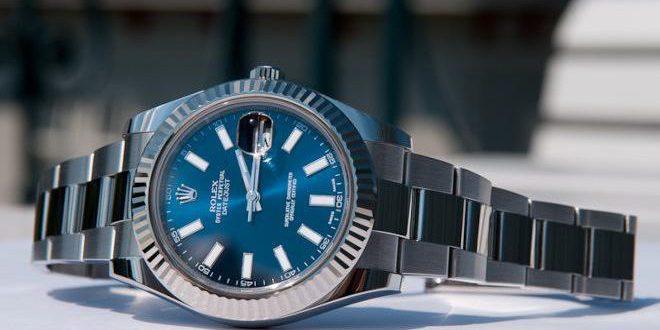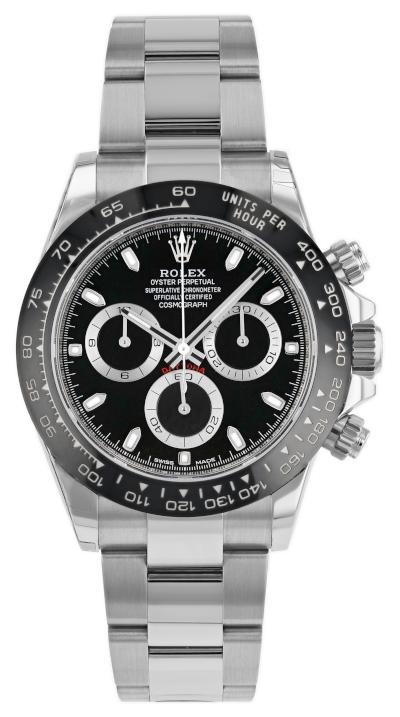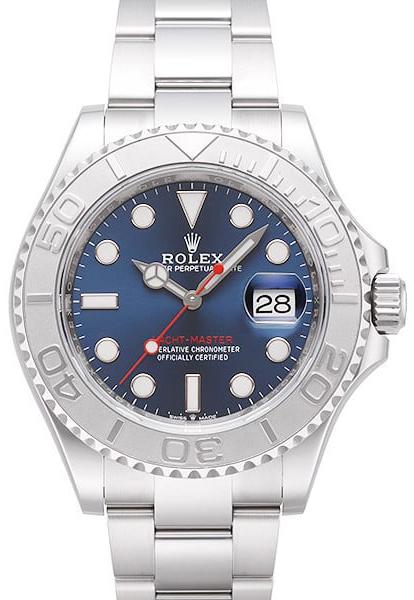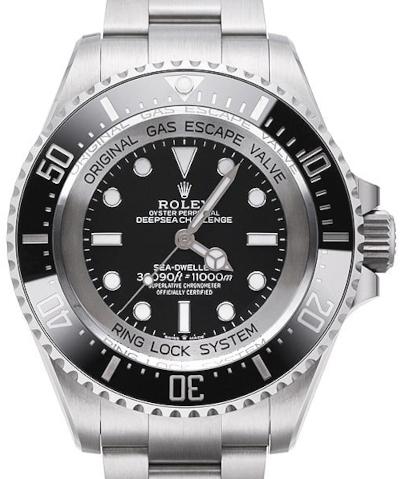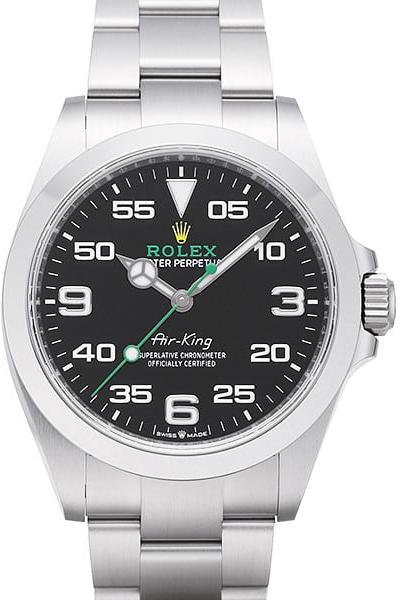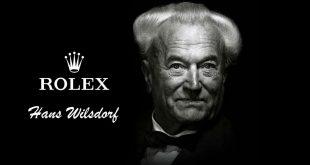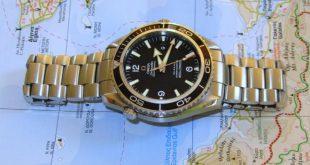« The legend formation of the most famous luxury watch brand in the world »
In 1927, the Oyster almost crossed the English Channel on the wrist of an enthusiastic swimmer. The waterproof timepiece was granted automatic self-winding in 1931, and as the Oyster Perpetual it caused a worldwide sensation. Since then, the myth has endured: Rolex is the benchmark when it comes to fascinating luxury watches.
Crucial for success stories – witty brand identity
Hans Wilsdorf knew what was important: First and foremost, wristwatches must provide accurate, uncomplicated and reliable time orientation. Additional functions that prove themselves in everyday use – such as a date display – are warmly welcomed. Elegant aesthetics were a pleasant side effect for the founder, but one that he did not leave completely to chance.
He skillfully established stylistic subtleties with recognition value that inspire the brand myth. The logo refers to an indispensable component and suggests that the timepieces see themselves as the crowning glory of the watchmaker’s craft. It also suggests that the accessories ennoble the wearer’s exquisite style.
Anyone who sees a watch with the day of the week written out automatically thinks of the Swiss brand and its legendary Day-Date. Under the brand name “Rolesor,” the manufacturer patented the perfect interplay of gold and stainless steel in watch design in 1933. Cosmograph Daytona, Datejust, GMT-Master or Submariner: to this day, the contrasting duet characterizes popular models in many watch families. It strengthens the Rolex myth just as much as any other brand-typical feature, which conveys: Those who think ahead are rewarded with success.
A few perennial favorites instead of many highlights
The brand’s history proves that it pays to pursue your goals with focus. Starting with the pure timepiece Oyster Perpetual, the Datejust was developed in 1945 to add plausible value with the date window. The robust Explorer debuted in 1953, the anti-magnetic Milgauss in 1954, and the Air-King in 1958: inspired by customers’ usage patterns, a number of functional watches joined the lineup in the brand’s early history.
Later, the established watch families were improved or docked with specialists, instead of adding new collections on a continuous basis. Families were only added selectively, such as the sporty Yacht-Master in 1992 and the cosmopolitan Sky-Dweller in 2012. The strategy is a smart one: almost every watch collection has become a legend because it has defied trends for decades and still shapes the brand’s range.
Real added value instead of fairytale pomp
Many luxury brands rely on dazzling status symbols with precious decor. The catch: fashion is fast-moving and the glamour of a jewelry watch fades before it can become a myth. Despite the whiz-bang start after its founding, Rolex opted for a pragmatic brand orientation and hit the mark.
Hans Wilsdorf was adept at finding out what functions working people, adventurers and athletes wanted. The brand’s own development department took the appropriate action – but not on its own. Real life was always understood as a meaningful testing ground and the target group as experts whose experience counted.
Scientists welcomed the fact that the Milgauss was not impressed by magnetic influences during many experiments. The Pan American airline signaled in the mid-1950s that pilots needed to keep track of two time zones during long-distance flights. In response, Rolex served up the GMT-Master. Advances in underwater expeditions spoke in favor of the Sea-Dweller, which by 1967 was water-resistant to a depth of 610 meters and equipped with a helium valve.
Since 1971, the Explorer II has ensured that research teams can distinguish day and night time without natural clues during caving and polar missions. The Sky-Dweller, with its GMT function and annual calendar, meets the needs of today’s business world. The examples make it clear: The myth surrounding the luxury brand is not constructed, but the result of a brand strategy that is close to reality.
Time for everything except standstill – good basic idea, ingenious further development, boundless vision
The “Rolex” myth is not a passing phenomenon, but has endured for decades. Because the brand does not rest on its success stories, but thinks them logically further. In 1927, it was like a functional revolution that the Oyster was waterproof. Preprogrammed was the desire to wear the sports watches not only for swimming, but also for diving. After all, it is vital to keep an eye on the time under water without any problems.
Rolex ensured water resistance to a depth of 100 meters and readability without confusion so that the manufacture could present the first diving watches in 1953. Since then, the Submariner’s water resistance, bezel and dial design have been optimized several times.
In principle, a diver’s watch is suitable for sailing, but the solution is not optimal. The Yacht-Master therefore takes up the basic functional ideas to be prepared for the natural challenges on the ocean. However, it presents a more sensible bezel that can be used to record travel times during water sports.
Extreme missions foreshadow that the Sea-Dweller will not be up to future deep-sea expeditions. In keeping with the myth, Rolex proactively met the challenge and developed the Deepsea Challenge. They attached the professional diver’s watch to the grappling arm of the submersible James Cameron used to venture into the Mariana Trench in 2019. The enormously resistant timepiece was not impressed by the extreme forces acting on it at an ocean depth of 11,000 meters, making human life impossible so far. This also applies to free diving with professional equipment.
Motivating myth with some balm for the ego
Anyone who has not been interested in watch history so far may ask themselves at this point: What is the appeal of wearing the deep-sea expedition watch Deepsea or the pilot’s watch Air-King with its strange dial design, far from adventures? The answer is provided by the myth that drives Rolex itself: The daring watches inspire you to leave your personal comfort zone and explore your potential. After all, life becomes exciting from the point where you mentally allow the impossible or even dare to put it into practice.
Hand on heart: it’s tempting to wear a Cosmograph Daytona, with which racing driver and acting legend Paul Newman whizzed across the screen in the 1969 cult film Indianapolis. Just as good for the ego is the thought that the authentically designed Submariner signed the charming style of James Bond between 1962 and 1989. The nickname “Presidential Watch”, which is common for the Day-Date, speaks volumes. It is not surprising if you feel a little more confident on the business floor with the favorite model of famous politicians, stars and business bosses. This emotional myth is not embarrassing, but the quintessence of a brand philosophy that is both ambitious and human.
Image source:
Aritcle image | By hypo.physe – https://www.flickr.com/photos/hypophyse/4787808343/, CC BY-SA 2.0, https://commons.wikimedia.org/w/index.php?curid=121857327
 Uhrinstinkt Magazine
Uhrinstinkt Magazine
